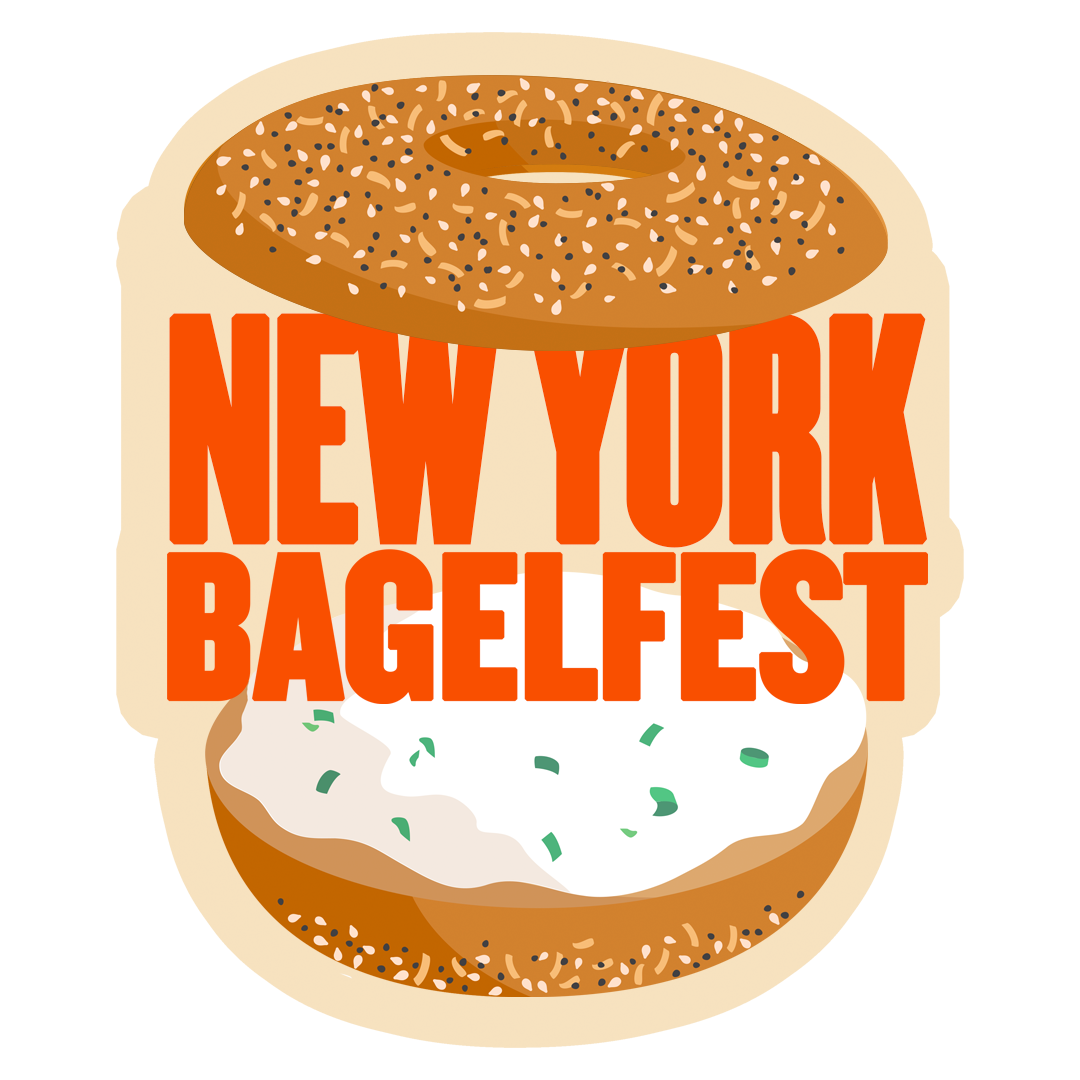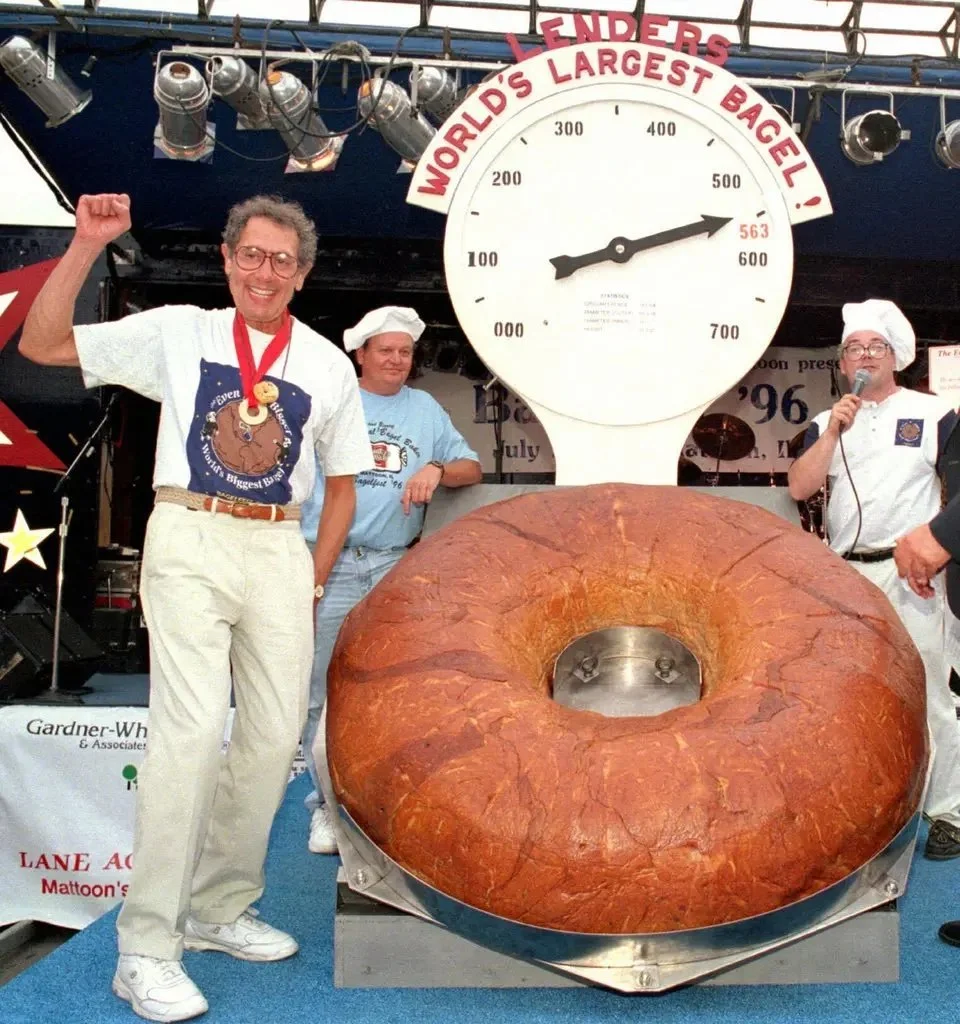The Bagel's Unlikely Journey: from Eastern European Peasant Food to Global Icon
The humble bagel has a rich and fascinating history, which has seen it rise from a niche ethnic food item to a global phenomenon, one of the most iconic foods of the most iconic city in the world - New York City.
In this blog post, we'll take you on a journey through the history of the bagel, from its Jewish roots in Eastern Europe to its current worldwide popularity, touching on key milestones and innovations that have shaped the bagel as we know it today.
1610: A Polish Peasant Food
Bagels have their origins in Jewish cuisine, dating back to the 17th century in Eastern Europe. It is believed that bagels stemmed from anti-Semitic laws preventing Polish Jews from baking bread. To circumvent these edicts, Jewish bakers would boil the dough before baking it, a loophole that allowed them to bake.
The unique preparation process had additional practical benefits. The distinctive hole in the middle of a bagel made it easy to transport on dowels or strings, making it a convenient food option. Additionally, the protective crust of a bagel meant that even when it went stale, it could be dipped in water or liquid and still be enjoyed. Among many observant Jewish families, there was a tradition to make bagels on Saturday evenings at the conclusion of the Sabbath. They were not permitted to cook during the Sabbath, and compared to other types of bread, bagels could be baked very quickly as soon as the Sabbath ended.
19th century: Immigration to North America
As Jewish immigrants made their way to North America, they brought bagels with them. Bagels soon became a staple food item in cities like New York and Montreal for both Jewish and non-Jewish communities. Both communities developed their own style of bagel, and the debate of which style is superior rages on to this day: The New York vs Montreal Bagel Rivalry.
Early 1900’s: Bagel Bakers Unionize
In the early 20th century, the Bagel Bakers Union Local 338 was established in New York City to represent the interests of bagel makers. This union helped to regulate the bagel-making process, ensuring consistent quality and promoting the expansion of the bagel industry. Read more about Local 338 and the world’s toughest bagel bakers and How New York’s Bagel Union Fought — and Beat — a Mafia Takeover.
1950’s: Bagel Rolling Machine
The invention of a commercially viable bagel rolling machine in the 1950’s revolutionized the bagel industry. This innovation allowed for mass production of bagels, making them more accessible and affordable to the general public. Read a first person account of the history and development of the bagel rolling machine from the inventor Daniel Thompson - who’s second most notable invention was the foldable ping-pong table!
The bagel rolling machine spelled the end for the Bagel Bakers Union Local 338, as ''A machine could roll 300 dozen bagels an hour with one man operating it, while two experienced hand rollers could only produce 125 dozen in the same amount of time.'' (source)
Daniel Thompson, in apron, in 1968 with a machine that manufactured 4,800 bagels an hour. (New York Times)
1960’s: Mass Production
The true turning point in the bagel's journey from a simple, local food to a global icon was the popularization of bagels through mass production, largely led by Lender's Bagels.
In the 1960s, Lender's Bagels, a family-run bakery in Connecticut, began freezing bagels, enabling them to be shipped across the country and stored for longer periods. This innovative approach revolutionized the bagel industry, making bagels readily available to consumers far beyond their traditional strongholds.
Led by the legendary marketing antics of the great bagel promoter, Murray Lender, the bagel became cemented in mainstream American culinary culture.
Legendary bagel promoter Murray Lender with a world-record breaking 563-pound bagel in 1996. (New York Times)
1980’s: Everything Bagel
The Everything Bagel, which features a mix of seeds, garlic, onion, and salt, was first introduced in the late 1970’s or early 1980’s. While the origins of the everything bagel remain murky, this unique flavor combination quickly became a fan favorite and contributed to the growing variety of bagel options available to consumers.
According to order data released by GrubHub in 2022, the Everything Bagel is the most popular among New Yorkers. However, the most popular bagel flavor in the country, however, is…drum roll…blueberry! Yes, we were as shocked as you are.
2015: Rainbow Bagel, Social Media Phenom
The colorful Rainbow Bagel, which originated from the creative mind of Scot Rossillo at the Bagel Store in Williamsburg, Brooklyn, became a social media sensation starting in 2015. This vibrant and visually striking bagel added a playful twist to the traditional bagel, capturing the imagination of consumers and contributing to the continued growth and evolution of bagel culture.
While the Bagel Store shuttered it’s doors permanently in 2022, the legacy and popularity of the bagel live on at bagel shops and social media feeds around the world.
The rainbow bagel - a boon for the bagel industry in the age of social media
2021: The Best Bagels are made In…California?
The caption reads: “At Boichik Bagels in Berkeley, Calif., Emily Winston makes her ideal version of a New York bagel, loosely based on the H & H version she remembers eating as a child.Credit...Preston Gannaway for The New York Times”
In a controversial move, the New York Times published an article with the audacious title, The Best Bagels Are in California (Sorry, New York). This assertion, unsurprisingly, ruffled feathers among the dedicated bagel enthusiasts from coast to coast.
While the debate about the bagel supremacy of New York versus California (never mind Montreal) rages on, the spirit of the debate underscores a more essential truth: the artisanal craft of high-quality bagel-making, once deeply rooted in the cultural fabric of New York, has transcended geographical boundaries and found its way to the West Coast and beyond. The spread of bagel culture is indicative of the universal love for this delightful baked good across the country and across the world.
2022: Celebrating Bagel Culture: BagelFest
In a clear demonstration of the bagel's steady rise in global popularity, the industry saw the inauguration of a unique event – BagelFest. This first-of-its-kind trade and consumer show has been dedicated entirely to our beloved ring-shaped bread.
BagelFest provides an unprecedented platform for everyone involved in the world of bagels, from the bagel enthusiasts who relish their morning bagel with cream cheese, to the artisans rolling and baking the bagels, and the retailers serving a diverse range of bagel styles and flavors to their customers.
One standout participant has been PopUp Bagels, a Connecticut-based shop that has seized the title of Best Bagel in the BagelFest Best Bagel competition for two consecutive years. This unexpected win only further confirms that the craft of bagel-making has truly spread its wings, reaching and inspiring artisans well beyond the borders of New York City.
PopUp Bagels celebrating the People’s Choice Award and Expert’s Choice Award for the second consecutive year at the 3rd Annual BagelFest in 2022
The industry's most innovative minds showcase their artisanal skills at BagelFest, presenting the newest bagel flavors, and the latest trends in bagel-making. The event serves as a testament to the bagel's phenomenal journey, highlighting the global demand for this simple yet scrumptious food item.
Moreover, BagelFest creates an opportunity for the industry to come together to exchange ideas, celebrate their shared passion, and further elevate the craft of bagel making. It's a chance for professionals and enthusiasts alike to explore the boundaries of what's possible with bagels and to appreciate the diverse range of flavors, styles, and techniques in bagel craftsmanship.
Conclusion
From their humble beginnings in Eastern Europe to their current status as a global icon, bagels have come a long way. Their rich history is a testament to the adaptability, versatility, and irresistible appeal of these delectable treats. As we continue to innovate and experiment with new flavors and presentations, there is no doubt that the bagel's popularity will only continue to rise. So, the next time you bite into a delicious, chewy bagel, remember the fascinating journey it has taken to reach your plate and appreciate the centuries of tradition and innovation that have gone into creating this iconic food.
If you've enjoyed learning about the history of bagels and want to experience the best of New York City's bagel scene first-hand, why not join one of our NYC Bagel Tours or sign up for a Bagel Baking Workshop? It's a fantastic way to taste the legacy of bagel history for yourself and learn the secrets of making these iconic treats. Click here to learn more and book your spot today!








